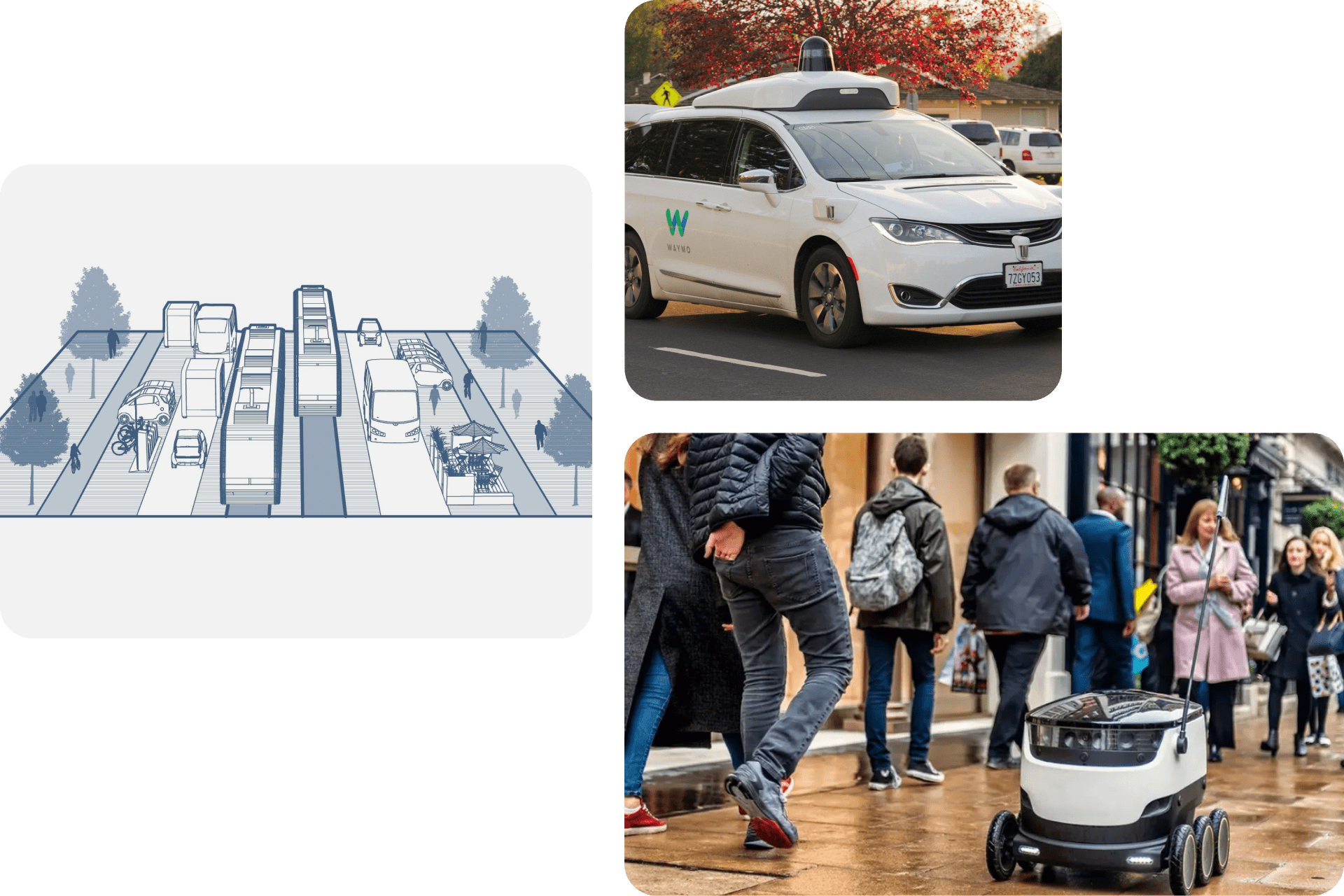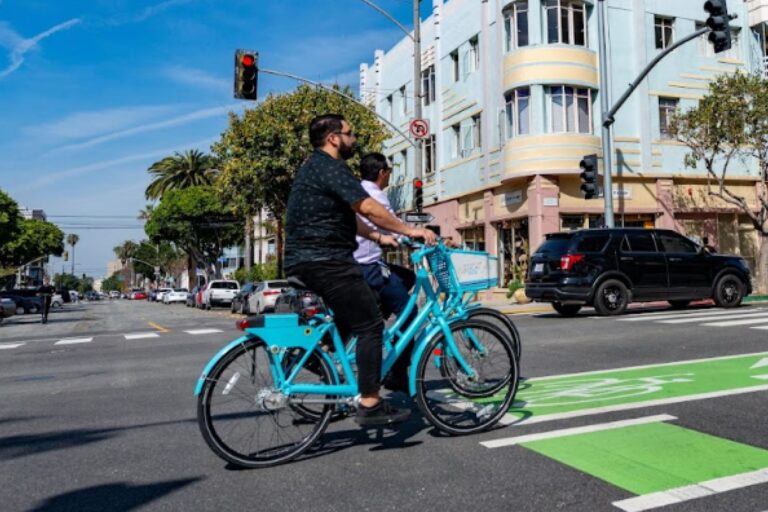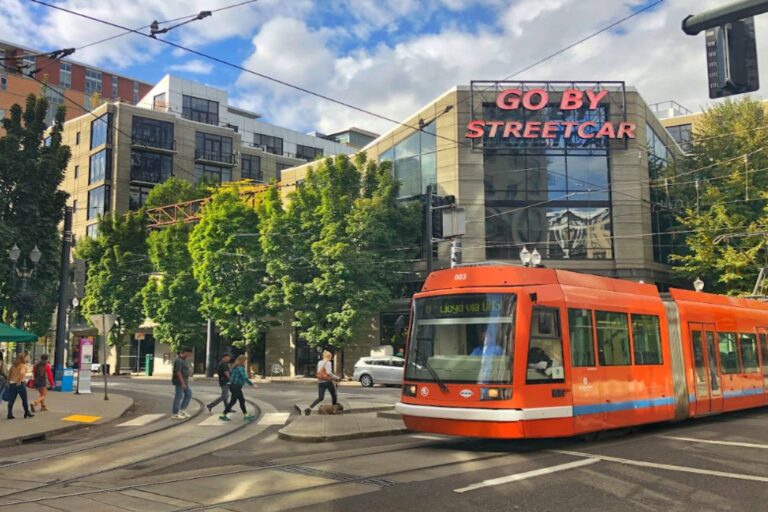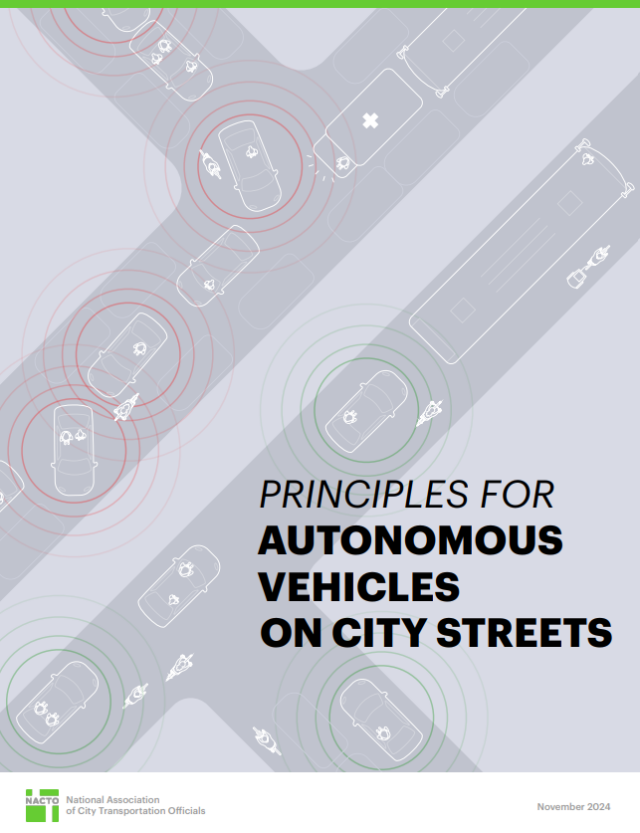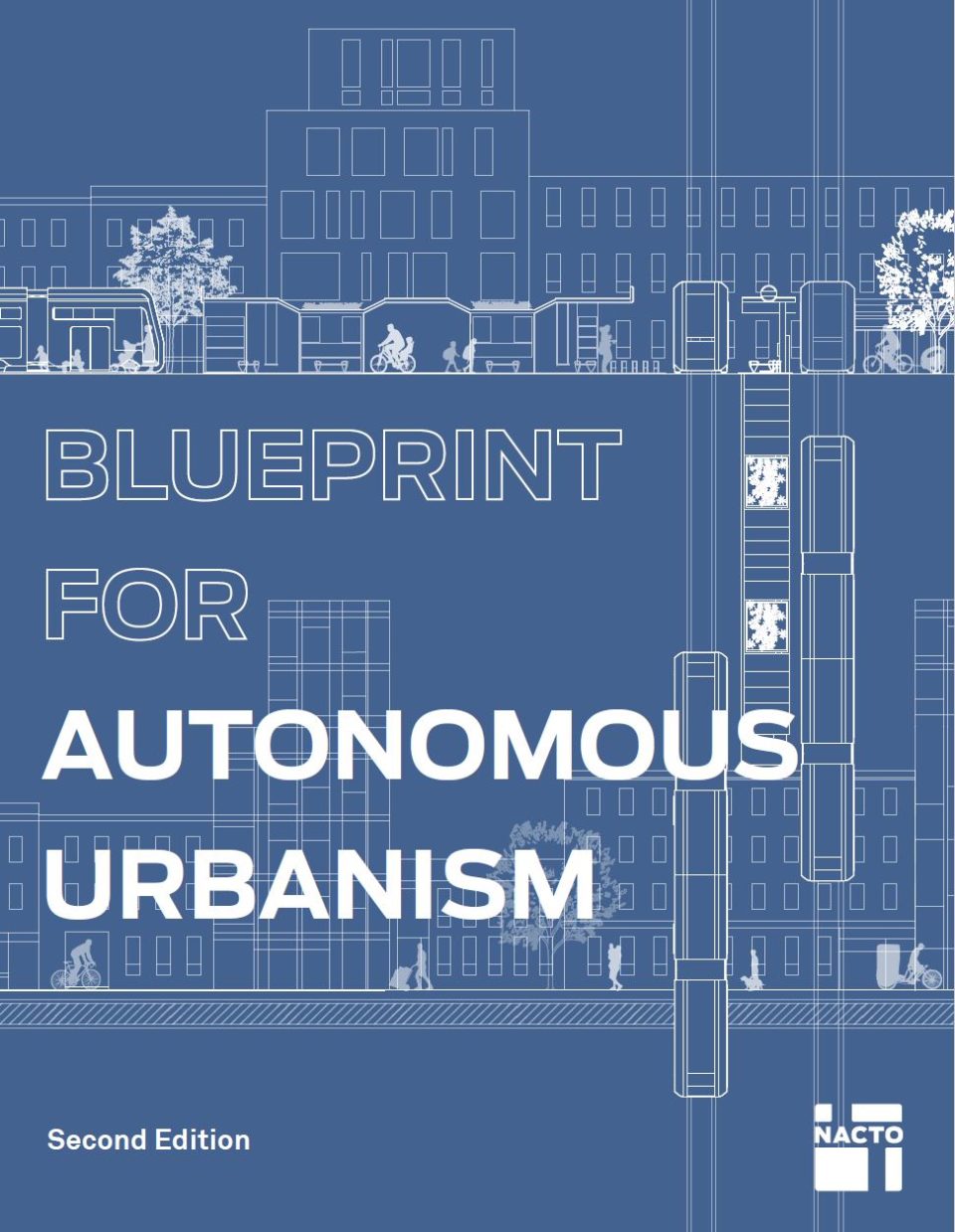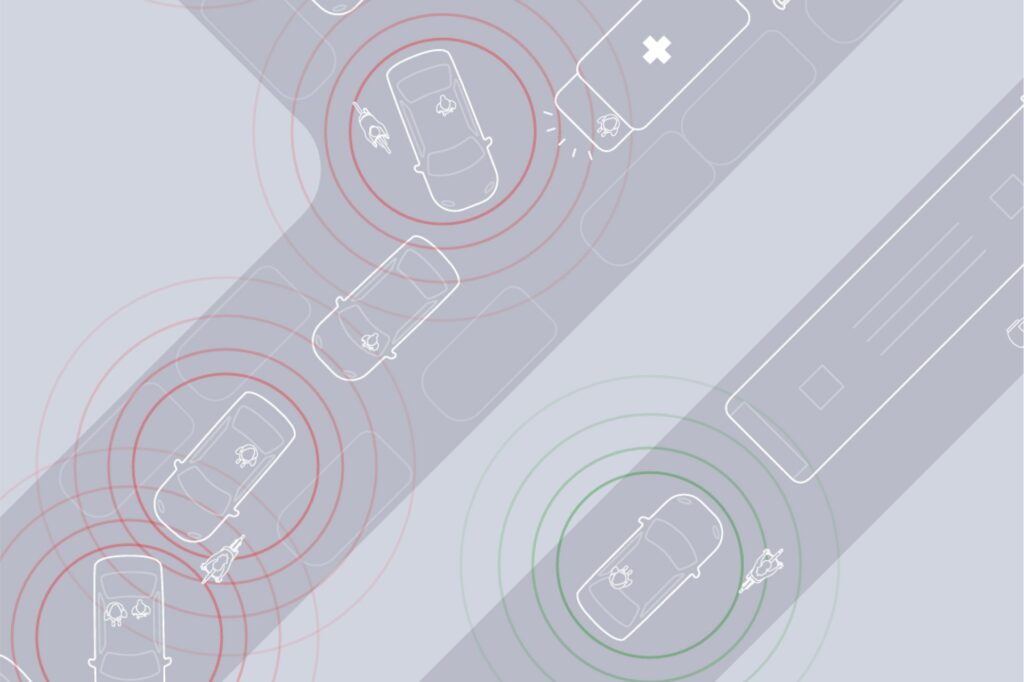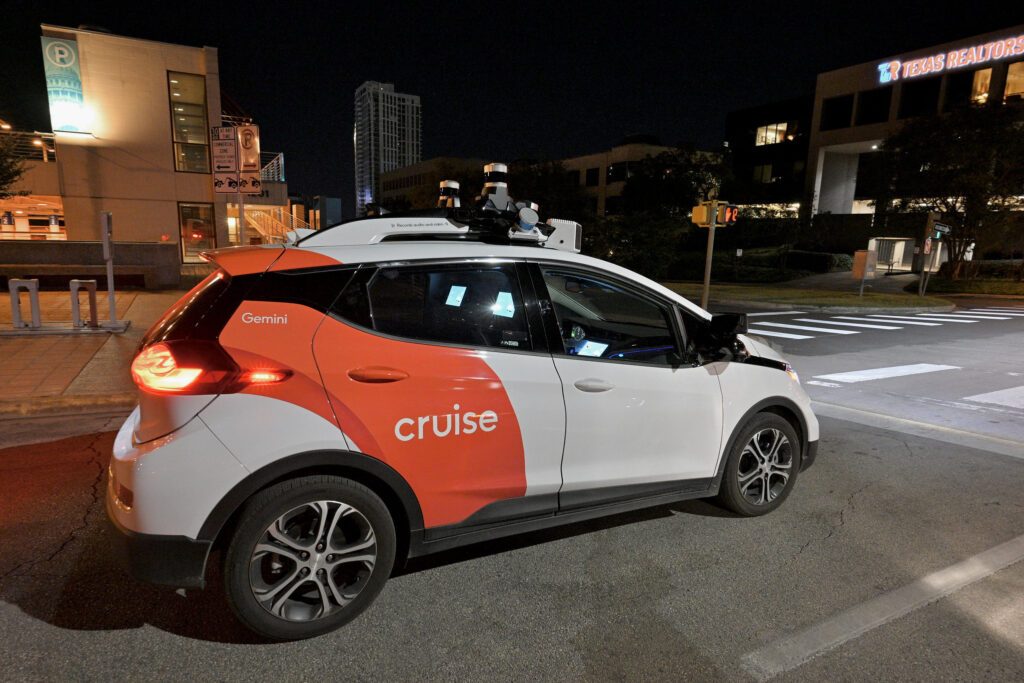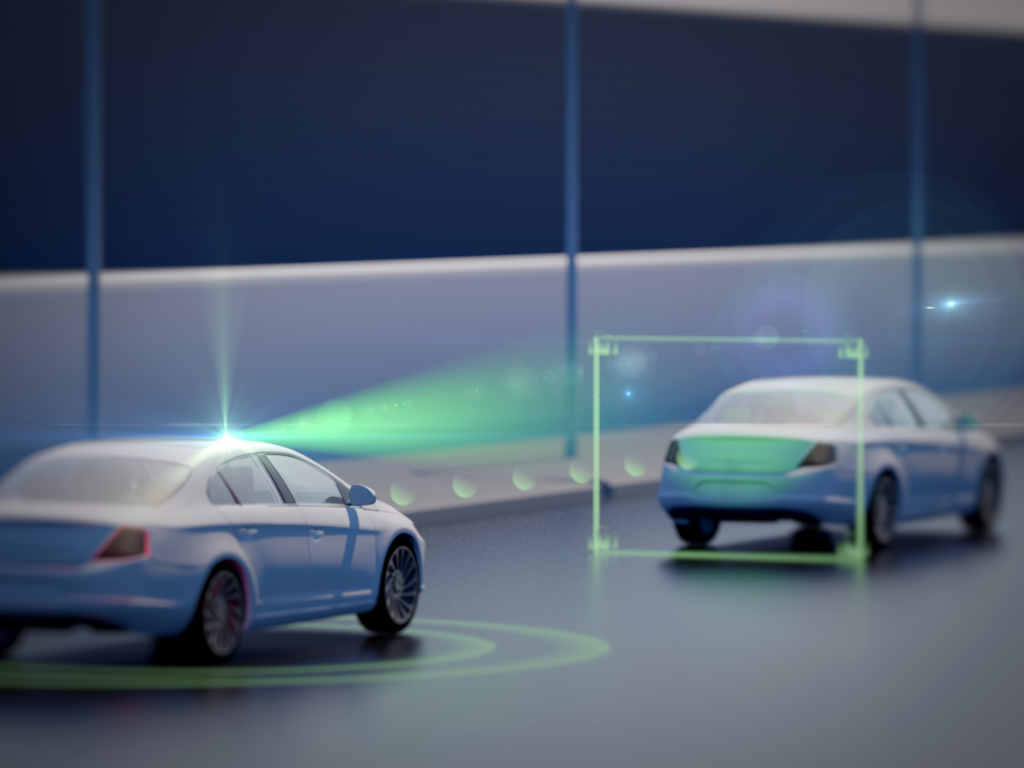Automated vehicle technology holds many promises for cities, but the potential benefits of automation are not guaranteed. City policies must proactively guide the technology to prioritize people-centric design. By taking proactive steps now, cities can shape an autonomous future that puts people at the core of all decision-making.
NACTO supports an autonomous future that enhances all aspects of cities’ transportation systems: improving safety for all road users, re-balancing the use of the right-of-way, and expanding mobility for all. AVs have the potential to be a deeply impactful technology: they can either complement ongoing efforts to provide all people with sustainable, accessible, and affordable transportation; or they can undermine them.NACTO’s members communicate about their experiences with AVs through our Emerging Technology Peer Network and Autonomous Vehicle Working Group. Our publications offer guidance on the policy and design changes cities can make to prepare for an autonomous future.
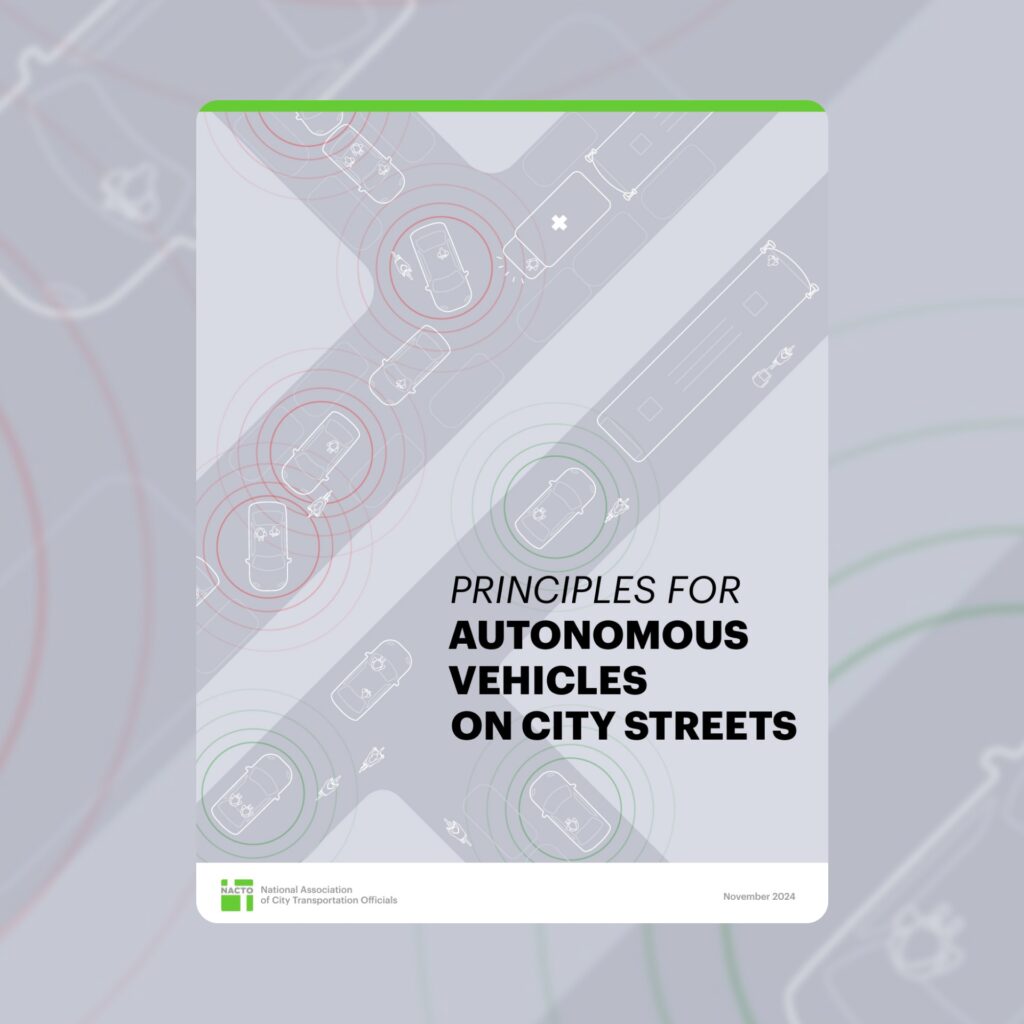
FEATURED
Principles for Autonomous Vehicles on City Streets
NACTO’s new Principles for Autonomous Vehicles on City Streets help all actors–cities, states, federal regulators, and AV companies–successfully integrate AVs into existing, complex city streets and transportation systems.
Photo Credits: Waymo van via Dllu
